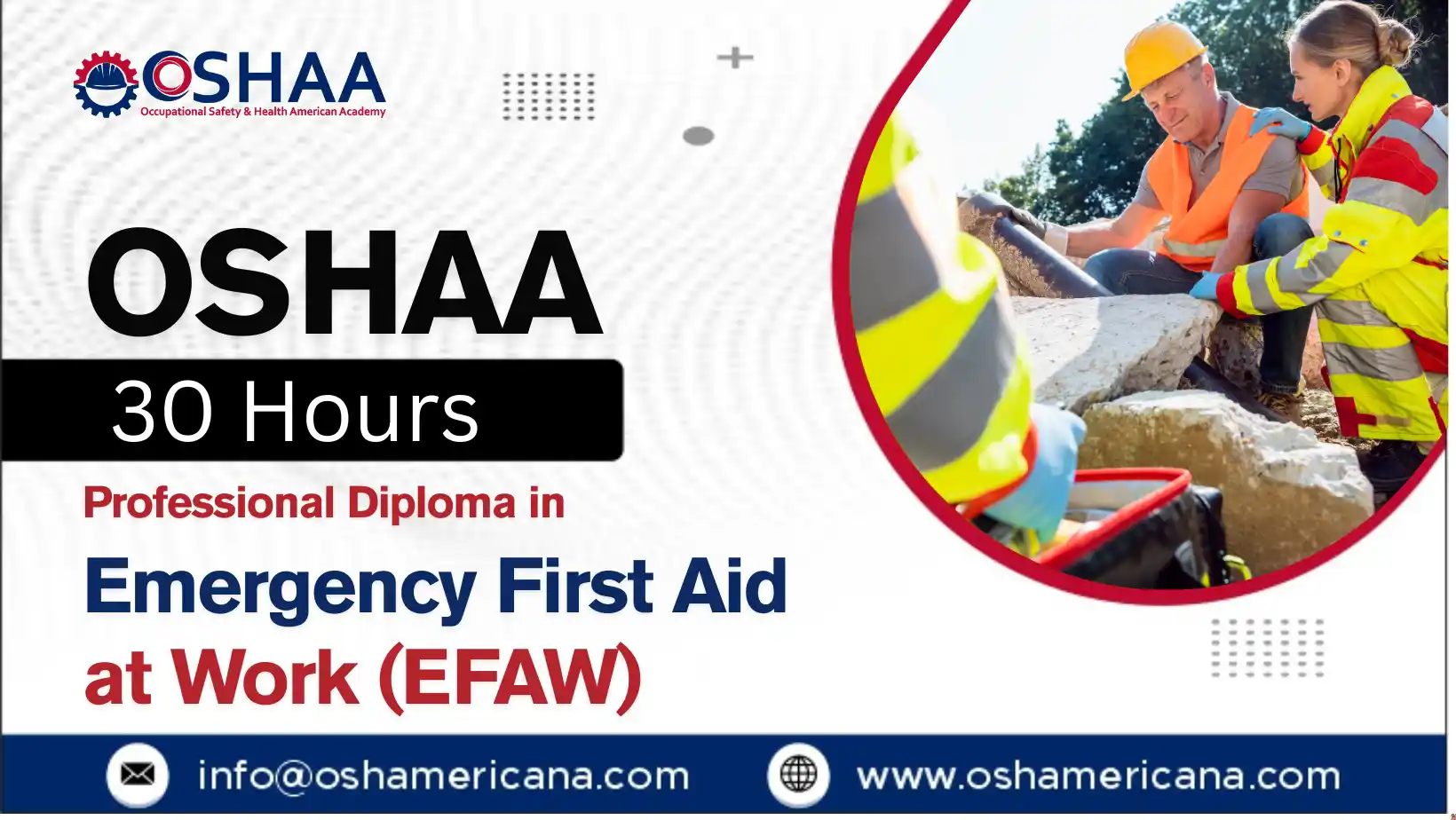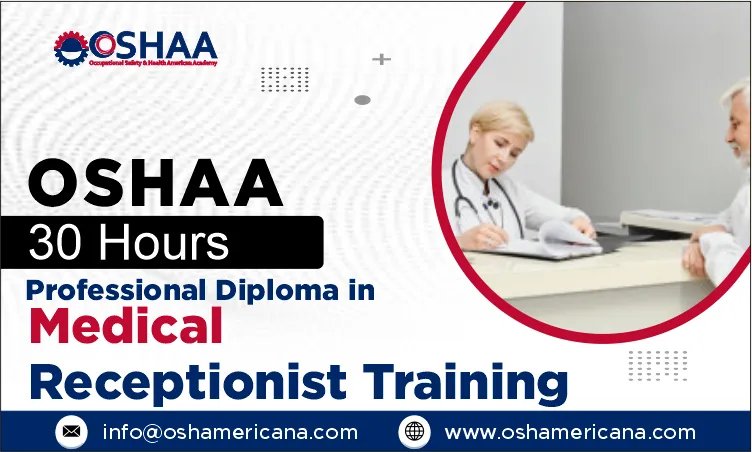The OSHAA 30-Hours Professional Diploma in Emergency First Aid at Work (EFAW) is a comprehensive training programme designed to equip participants with the essential skills and knowledge required to respond effectively to medical emergencies in the workplace. Developed in line with international health and safety standards, this course ensures that participants are confident, competent, and prepared to take immediate action when urgent situations arise.
Through structured, hands-on training, participants learn how to assess emergency scenarios, provide life-saving interventions, and deliver appropriate care until professional medical assistance is available. The programme covers a broad range of topics including initial casualty assessment, cardiopulmonary resuscitation (CPR), managing unconscious individuals, controlling bleeding, treating shock, and handling workplace-specific hazards.
A strong emphasis is placed on practical skill development, ensuring participants can apply theoretical knowledge in real-life situations with confidence. The course also addresses the importance of effective communication during emergencies, enabling participants to work collaboratively with colleagues and emergency services.
The OSHAA EFAW diploma not only meets compliance requirements for workplace safety but also enhances overall preparedness across various industries. Whether in an office, factory, construction site, retail space, or hospitality venue, the ability to respond quickly and appropriately to health emergencies is a valuable asset.
By completing this professional diploma, participants gain a recognised qualification that demonstrates their commitment to safety and well-being in the workplace. This certification can support career advancement, improve employability, and contribute to creating a safer working environment for all.
OSHAA 30-Hours Professional Diploma in Emergency First Aid at Work (EFAW)
Study Units
Learning Outcomes
Introduction to Emergency First Aid at Work and Legal Responsibilities (2 Hours)
• Understand the scope and purpose of emergency first aid in the workplace
• Recognise legal requirements and the role of first aiders under workplace safety regulations
• Identify the principles of health and safety compliance in emergency care
Workplace Risk Assessment and Emergency Preparedness (3 Hours)
• Conduct workplace risk assessments to identify potential hazards
• Develop effective emergency response plans for various workplace scenarios
• Understand preventive measures to reduce the likelihood of incidents
Primary Survey and Casualty Assessment Techniques (3 Hours)
• Apply the primary survey (DRABC) approach to assess casualties
• Identify life-threatening conditions requiring immediate intervention
• Perform rapid yet accurate evaluations to prioritise treatment
Cardiopulmonary Resuscitation (CPR) and Automated External Defibrillator (AED) Use (5 Hours)
• Perform adult CPR effectively and in line with recognised guidelines
• Safely operate an AED during cardiac arrest situations
• Integrate CPR and AED use within a coordinated emergency response
Management of Unconscious Casualties and Recovery Position (3 Hours)
• Assess and manage unconscious casualties to maintain airway and breathing
• Correctly position casualties in the recovery position to prevent complications
• Monitor and provide ongoing care until professional help arrives
Control of Bleeding, Wound Care, and Shock Management (5 Hours)
• Apply appropriate techniques to control severe and minor bleeding
• Provide effective wound care to prevent infection and promote healing
• Recognise and manage different types of shock in emergency situations
First Aid for Burns, Scalds, and Workplace-Specific Injuries (3 Hours)
• Identify and treat burns and scalds according to severity
• Understand first aid protocols for chemical, electrical, and thermal burns
• Address injuries specific to the participant’s workplace environment
Management of Choking, Fractures, and Soft Tissue Injuries (3 Hours)
• Apply first aid techniques for choking in adults
• Provide immobilisation and support for fractures and dislocations
• Treat sprains, strains, and other soft tissue injuries effectively
Handling Medical Emergencies: Heart Attack, Stroke, and Seizures (3 Hours)
• Recognise signs and symptoms of heart attacks, strokes, and seizures
• Deliver immediate first aid interventions to stabilise the casualty
• Support recovery while awaiting professional medical assistance
Course Benefits – OSHAA 30-Hours Professional Diploma in Emergency First Aid at Work (EFAW)
• Equips participants with the confidence and competence to respond effectively to workplace emergencies
• Enhances safety awareness and hazard recognition skills in professional environments
• Provides hands-on training in CPR, AED use, and life-saving first aid techniques
• Meets recognised workplace health and safety compliance requirements
• Improves the ability to assess, manage, and stabilise casualties until medical help arrives
• Covers a wide range of medical emergencies, ensuring preparedness for varied situations
• Strengthens teamwork, communication, and coordination during critical incidents
• Increases employability and professional credibility in safety-conscious industries
• Offers practical skills applicable across multiple sectors, from offices to high-risk work sites
• Promotes a culture of safety and prevention in the workplace
• Participants working in roles that require first aid knowledge as part of workplace compliance
• Individuals in safety, health, and emergency response positions across various industries
• Participants in supervisory or managerial roles responsible for workplace safety
• Professionals in construction, manufacturing, hospitality, education, and corporate sectors
• Security personnel, facility managers, and on-site safety coordinators
• Participants seeking to enhance their skills for career advancement in safety-related roles
• Anyone responsible for responding to workplace medical emergencies
• Community members or volunteers looking to develop essential first aid capabilities
• Participants preparing for roles in high-risk environments where immediate response is critical







